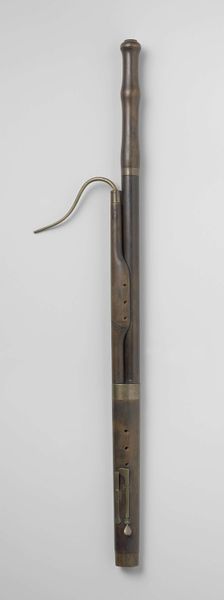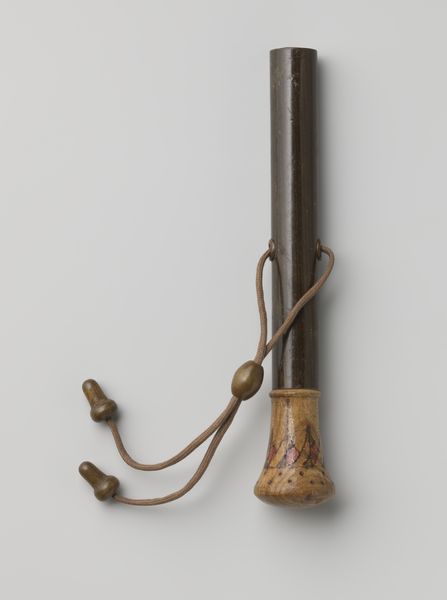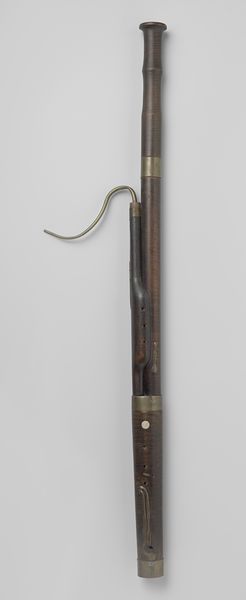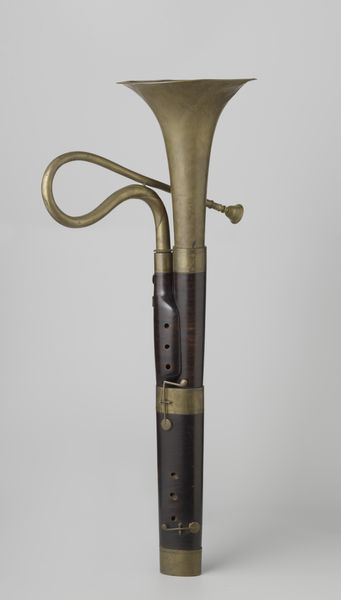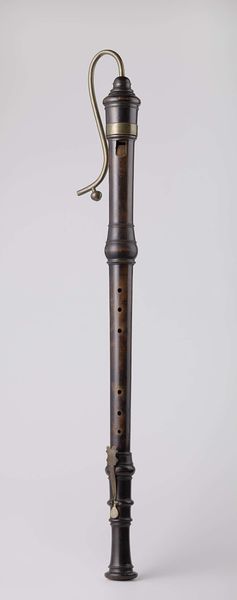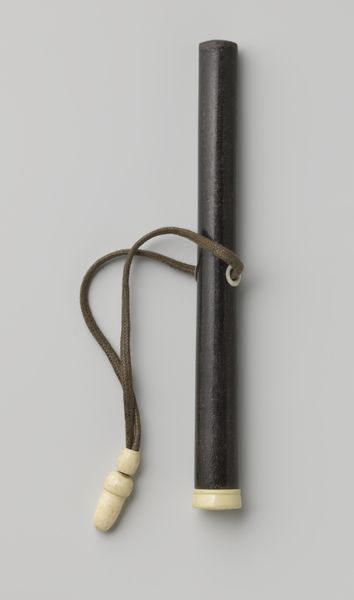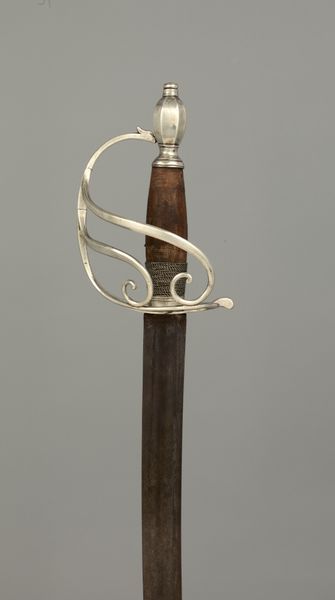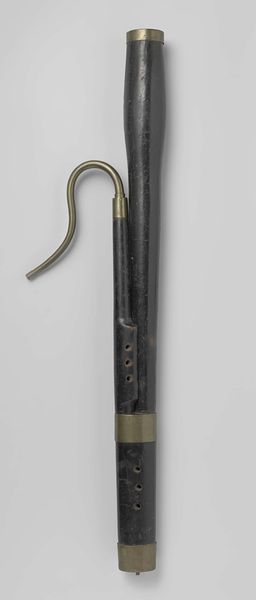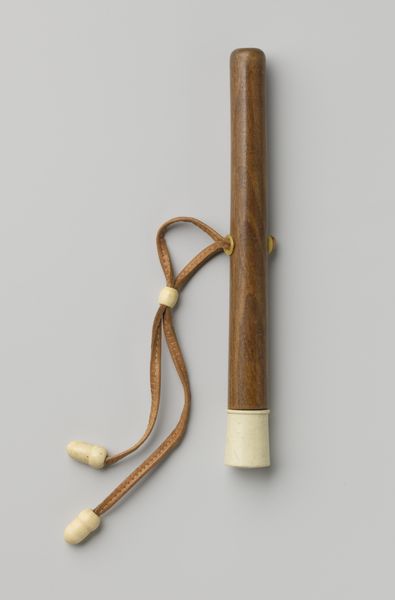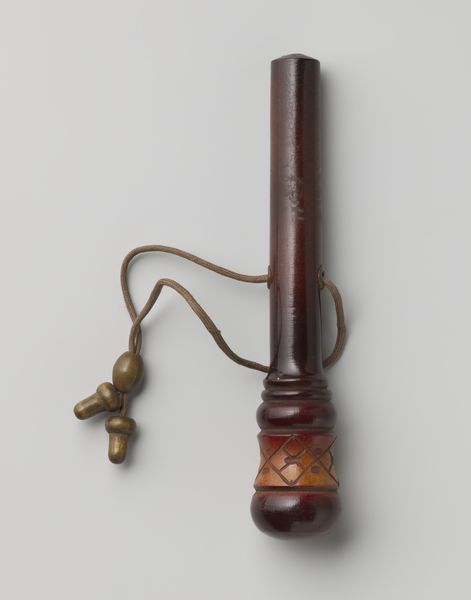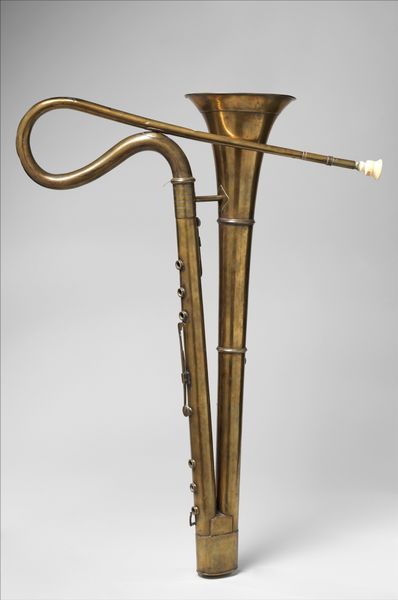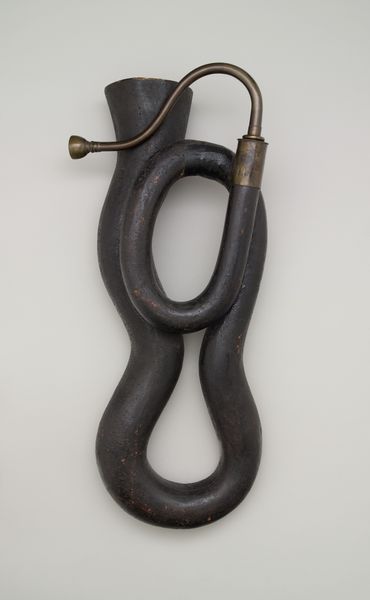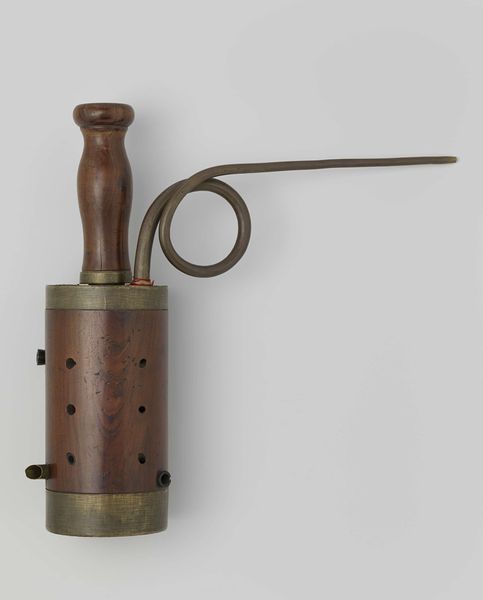
brass, metal, bronze, sculpture
#
brass
#
metal
#
sculpture
#
bronze
#
sculpture
#
musical-instrument
Dimensions: Height: 26 15/16in. (68.4 cm) Diameter (Of bell): 7 11/16 in. (19.6 cm) Weight: 2.2 lbs. (997.913 g)
Copyright: Public Domain
This is a Tenor Bugle in B-flat, made by Josef Serpek. Although we don’t know the exact date it was made, the instrument’s history reveals complex narratives about identity, culture, and politics. The bugle has roots in military and ceremonial contexts, often used to signal orders or celebrate victories. Its sound became intertwined with notions of nationalism, honor, and collective identity. As bugles moved into civilian life, they were adopted by various social and cultural groups, including those on the margins. They became instruments of resistance and expressions of cultural pride. The B-flat tenor bugle may have been designed to give voice to communities or individuals who were often silenced or underrepresented. They also became a means of empowerment, allowing individuals to express their unique experiences, and to connect with others through music. The Tenor Bugle embodies a fascinating history of cultural appropriation and reinvention. It suggests that the instrument’s cultural significance lies not only in its sound but also in its capacity to forge connections across diverse social landscapes.
Comments
No comments
Be the first to comment and join the conversation on the ultimate creative platform.
